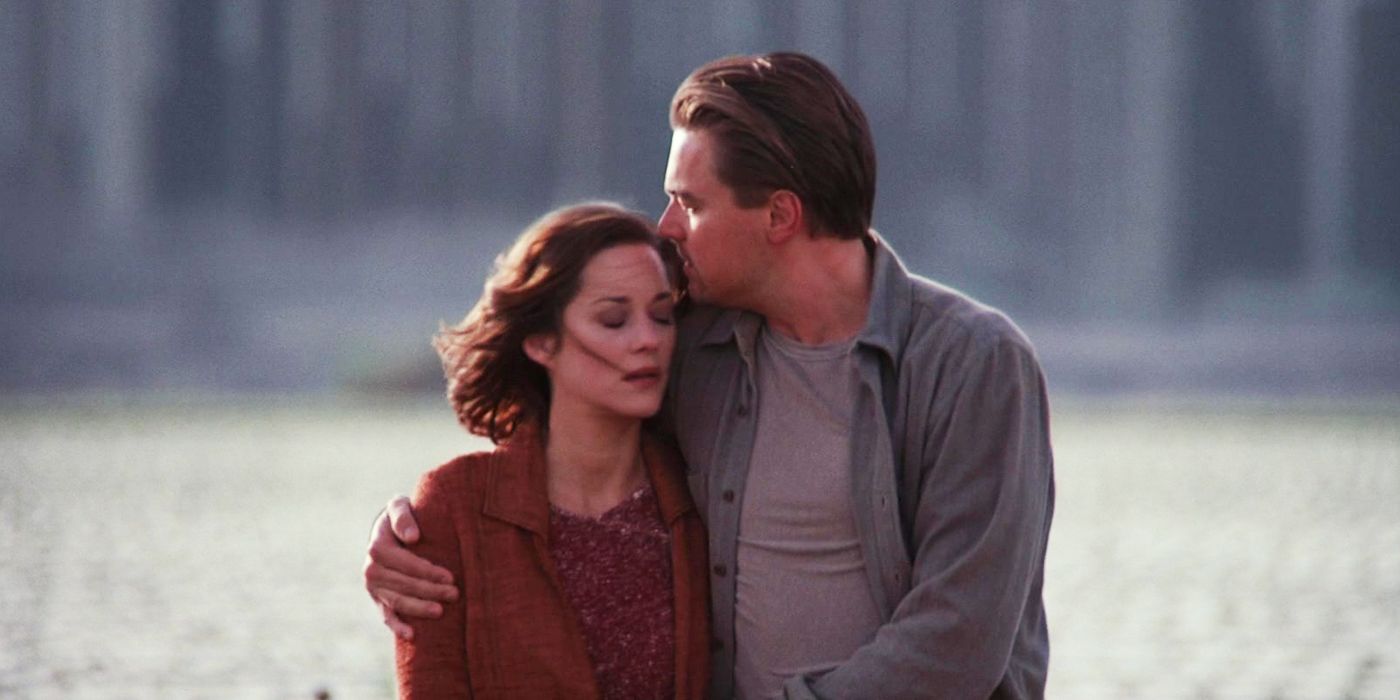While on an upcoming episode of the Filmmaker Toolkit Podcast, writer and director Coralie Fargeat broke down the cinematic lineage of her “The Substance.” When talking about her much-heralded body horror sensation — the rare genre film to break into the awards race — Fargeat discussed wanting to make a film that “stays with you long after you leave the theater.” Fargeat has spent a great deal of time analyzing why certain movies left a lasting imprint on her and what she could learn from each.
“It’s about the phantasmagoria, the fact that you break the rules of reality,” said Fargeat. “You create the reality of your film, and then I think it gives you such a freedom to create something that no one else but you is going to create for your own movie.”
It’s how David Cronenberg, Stanley Kubrick, David Lynch, the Coen brothers, Darren Aronofsky, and John Carpenter broke from reality in their own unique ways that inspired the cinematic universe of “The Substance.”
While on the podcast, Fargeat pinpointed how each film’s themes, philosophy, use of genre, cinematic language, and experiments with craft had a tangible impact on “The Substance.”
 ‘The Fly’©20thCentFox/Courtesy Everett Collection
‘The Fly’©20thCentFox/Courtesy Everett Collection“The Fly” (1986), directed by David Cronenberg
If there’s one film that influenced “The Substance” above all, it is David Cronenberg’s “The Fly.” Seeing the movie not only opened Fargeat’s eyes to the storytelling power of body horror, but it was a major source of inspiration for the very themes and symbolism at the heart of “The Substance.”
“This one has a very important place with me, because it has such a powerful relationship to how the genre speaks to who we are as human beings, our desire to not be limited by the fact that we’re humans, to escape our human limitations, to escape our fears,” said Fargeat.
There is a direct line between the arc of Elizabeth (Demi Moore) in “The Substance” and Seth Brundle (Jeff Goldblum) in “The Fly.” Acting out of jealous rage, Goldblum’s character uses his invention to transport himself, but a housefly makes its way into his telepod resulting in a metamorphosous he can’t stop.
“I love the simplicity and symbolism, of having a powerful desire, something that you wish for yourself, but that is a line that you cross because you want to step out of your human limitations,” said Fargeat. “I think sci-fi is very philosophical. It’s really about what our dreams are as human being. I think from the start of humanity, we always had this fantasy to escape our human limitations, to not want to die, to not want to have our body decay. And I think that’s what make sci-fi speaks to our soul as human beings.”
One of the things Fargeat loved about Cronenberg’s film was that, in exploring the relationship we have with our bodies, it wasn’t shy about what we find ugly and disgusting about our anatomy — those aspects that don’t get discussed in polite society.
“[‘The Fly’] explores the insides, the things that we’re not supposed to show or reveal. … It’s a lot about sexuality, about the anus, about all the stuff that are supposed to be dirty or taboo,” said Fargeat. “And I think that’s what makes also the relationship with the prosthetics so interesting, because it’s almost a way to express for real, to incarnate the fantasies or dark dreams or dark relationship that we have with our own insides, with our own holes, with our own body parts.”
Fargeat said she was thinking about “The Fly” while writing “The Substance,” and you can see her tipping her cap to the 1986 classic. For example, the scene in which Elizabeth reaches inside herself to take out a chicken bone, Fargeat described the aftermath in the script as, “her belly button closed like an anus with a big slurp.” But it was how Cronenberg’s ideas were expressed in prosthetics that were its biggest influence on Fargeat and “The Substance” special makeup effects designer Pierre Olivier-Persin.
“The layer that I wanted to have in ‘The Substance’ was how women deal with the relationship they have with their own bodies,” said Fargeat. “‘The Substance’ was not being about aging with all those transformations, it’s about the fear, incarnating the fear that having your body transforming has on you. So that’s why also I wanted to have prosthetics that were not realistic all the time, because then it becomes a symbol. It becomes something that eats you alive, that deforms you, that gets you into this metamorphosis. It’s almost as if the anger was imprinted in the flesh. The body falling apart, the worst fear that we can have, the teeth, the ear, the nails are a huge homage to ‘The Fly,’ for sure.”
 ‘2001: A Space Odyssey’Everett Collection / Everett Collection
‘2001: A Space Odyssey’Everett Collection / Everett Collection“2001: A Space Odyssey” (1968), directed by Stanley Kubrick
“This movie had a huge impact on me when I discovered it quite late, I think I was 23 or 24,” said Fargeat. “I was very shocked in the way the grammar that was used, it was one that was natural for me as a filmmaker.”
Fargeat credits Kubrick’s masterpiece with supplying a template for her to make genre films with very little dialouge. And she said even before seeing “2001,” her instinct as a young director had been to center her subject in the frame, but after seeing Kubrick do it she became unbending.
“The [cinematographer] on my first short film told me, ‘Oh, there’s this guy walking up a street,’” recalled Fargeat. “And he told me, ‘Are you sure you don’t want to put it on the side? It’s more elegant. It’s more edgy.’ And I said, ‘No, I want the strength of the symbol, having him in the center.’”
Fargeat said Kubrick’s use of locations, sets, and space to create a powerful sensations for the audience in tracking character’s journey was something she studied and was constantly striving for in “The Substance,” but there is one sequence in “2001” in particular that had a direct impact on “The Substance.”
“The Stargate sequence, I remember when I was sitting in that cinema being so shocked by that moment, how long it is, how visceral it is, how many things I felt during that had no words, that wasn’t explained,” said Fargeat.
The way Kubrick created a sense of a journey through inventive use of light was at the front of Fargeat’s mind when she was first trying to figure out how the substance would create its transference to a new being, Sue (Margaret Qualley).
“When I wrote the sequence in ‘The Substance’ when [it] travels between Elizabeth’s body to Sue’s body during the birth sequence, when we enter the eyes and we travel through this tunnel of light until Sue emerged, the real reference I had was this Stargate sequence,” said Fargeat.
The director had read everything she could about how Kubrick shot the sequence and was convinced that shooting it practically was a big part of why it is so impactful, but also it inspired her to invent her own tools.
“Of course, nowadays we could have done that easily with CGI, and I said, ‘No, I want to do that for real. I want to find our own way to create this tunnel of light because it’s such an important moment of the film. It’s when the conscious is going to transmit from the matrix to her other self, and I do believe that what you feel for real creates an imprint on screen that is so different than when it’s just CGI,” said Fargeat. “So this one was a tough one, because we had no idea with our limited budget how we could find a system that [would] achieve it. We were doing that at the very end of shooting during the lab.”
After principal photography, Fargeat released her cast and a majority of her crew, but kept a small group of 10 filmmakers behind to shoot inserts, and test out different ways to shoot certain effects, like the “tunnel of light.” She refers to this as her lab. You can watch the behind-the-scenes footage of how they shot the sequence of the tunnel of light here.
“We kept researching ideas, we kept testing things with the director of photography [Benjamin Kracun], key grip, and the gaffer — the tube systems that were on a rolling device that didn’t move, and our camera didn’t move, but it gave the impression of this endless journey,” said Fargeat. “To me, that’s the one of the sequence I think I’m the most proud of, [because] we invented our own tools for the film.”
 ‘Barton Fink’©20thCentFox/Courtesy Everett Collection
‘Barton Fink’©20thCentFox/Courtesy Everett Collection“Barton Fink” (1991), directed by Joel and Ethan Coen
“‘Barton Fink’ is very important in the way that it’s not set in reality and uses expressionist language in how the inner world of the character is transmitted in the location,” said Fargeat.
Set in 1941, John Turturro plays the title character, a hit New York City playwright who is put under studio contract to write movie scripts. Suffering from writer’s block, under pressure, and out of place while holed up in a cheap L.A. hotel, Fink’s world starts to spiral.
“I remember this hotel room, where the thoughts of the character go on the wall, transforming his environment, and how this room becomes creepier and creepier as he himself goes into a darker and darker space,” said Fargeat. “This is something that I felt so powerfully, and left a very strong imprint on me as well, as Elizabeth’s apartment is a representation of her inner world. And the same way I wanted her apartment to evolve with her to represent the way she was transforming.”
Fargeat also said the way “Barton Fink” portrayed Hollywood was something she had in mind when writing and shooting “The Substance,” as there is a direct line between how the Coens satirized studio mogul Jack Lipnick (Michael Lerner) and Fargeat’s approach to the world of Elizabeth’s former producer, Harvey (Dennis Quaid).
“There was also the kind of excess of this Hollywood, a universe with this big producer, speaking loud, and the craziness of being the king of his world that represents Harvey’s world,” said Fargeat. “This kind of excessive power that you think you are allowed to dominate the world and to crush people. The way your characters can struggle, and the relationship between the weak and the powerful.”
 ‘Mulholland Drive’Courtesy Everett Collection
‘Mulholland Drive’Courtesy Everett Collection“Mulholland Drive” (2001), directed by David Lynch
Fargeat has a personal history with Lynch’s masterpiece, having seen the film’s premiere at the venue where her own career was catapulted last May.
“When I first went to Cannes for the very first time, I was 20, working as a PA, and I managed to get an accreditation from the technicians guild. I was going with my best friend, we were camping, and we were changing in the tent. There is camping a little bit further away and we were taking the bus or hitchhiking to the Palais,” said Fargeat. “I managed to a get a ticket, and it was the first movie I saw in The Palace in Cannes. It totally took me to the ground.”
“The Substance” is set in Los Angeles, and Fargeat has made clear it is based more on an idea of Hollywood, than the real place. It’s something she took inspiration from Lynch to accomplish.
“To me, doing a movie on Los Angeles without having ‘Mulholland Drive’ in mind is almost impossible,” said Fargeat. “I entered a world where everything is not explained, but there is so much to project of your own thoughts of your own inside world. It’s not Los Angeles, but it’s a David Lynch’s Los Angeles that’s going to live with you. It’s the place that is not reality. It’s the Los Angeles that is our unconscious mind and that gives all the dark elements of it that no one can totally explain.”
Lynch’s dark, noir-ish film, which journeys into Los Angles exteriors, is a very different world from “The Substance,” but the director’s approach is bring it to life is something Fargeat tried to model.
“I remember this film was such a shock [for] me, how you can create powerful emotions just with how you deal with the environment, how you deal with the set decoration, the music, the way [you] film things in a weird way. It’s something you can’t totally explain,” said Fargeat. “You can spend hours analyzing the meanings of different things, but I think it’s where all the crafts help — the cinematography, set decoration, sound, music, costumes — it’s all those elements tied together to create a world that is going to become unique, and they’re going to have so much symbolical power in the end.”
 ‘Requiem for a Dream’ ©Artisan Entertainment/Courtesy Everett Collection
‘Requiem for a Dream’ ©Artisan Entertainment/Courtesy Everett Collection“Requiem for a Dream” (2000), directed by Darren Aronofsky
“I love this film and it was with me when I was writing,” said Fargeat. “When I discovered that film, I related so much to the crazy obsessiveness of wanting to make yourself better and just ending making yourself worse. And the crazy relationship between wanting to be seen and have your moment of glory and be loved by people who look at you, and the craziness that can make you do.”
While all four of the main characters in “Requiem” have that obsessive drive that leads them down unfortunate paths, “The Substance” director was particularly drawn to Sara Goldfarb (Ellen Burstyn), and her dreams of appearing on her favorite game show. A dream that causes the TV-addicted, Brighton Beach widow to go on a crash diet.
It’s easy to draw a direct line between Burstyn’s Sara (a performance Fargeat highlighted for its incredible physicality) and Moore’s Elizabeth, including how the obsessiveness is cinematically brought to life — Sara doubles down on her amphetamine-diet pill addiction, against her doctor’s warning, her game show dreams become delusional, which Aronofsky captures with a bold use of camera and sound.
“It was such a visceral movie,” said Fargeat. “The relationship a woman can have with her body, with food, with being obsessive, concerned about what she looks like, wanting to transform herself, and expressed in a very expressionist way, and a symbolical way, like the fridge.”
As Sara’s delusions start to involve the game show’s host and live studio audience on TV start to mock her, her refrigarator also comes alive and attacks her.
“[Aronofsky] knows how to step out the rules of reality. The lenses become a tool to tell what’s in the character’s mind. When things deform, it kind of represents the craziness, the mental space of the character,” said Fargeat.
 ‘The Thing’©Universal/Courtesy Everett Collection
‘The Thing’©Universal/Courtesy Everett Collection“The Thing” (1982), directed by John Carpenter
“[‘The Thing’] has been very important for me for the ending of [‘The Substance’],” said Fargeat. “With ‘The Thing,’ I thought of the endless transformation, the endless metamorphosis for the very end [of ‘The Substance’] in the theater when the final monster comes on stage and the head is blown away.”
Fargeat first saw the film in her early twenties, when she had a Sunday morning routine of waking up and discovering a new body horror classic.
“I love the relationship with metamorphosis and the way the practical effects plays with all your phobias, with things that are going to come out of you, things that are going to eat you, things that are going to deform you, things that are going grow from you,” said Fargeat. “That’s a movie that was a big inspiration in terms of craft, and the way they found their own techniques. It’s a movie for every prosthetic artists that is so important and has paved the way.”
Fargeat has read all the behind the scenes stories of the making of “The Thing,” and how the sheer volume of the ground-breaking prothetics work almost broke Carpenter’s team. But the background of all the tricks inspired her. Said Fargeat, “I always refer when you work with prosthetics to being like kids playing with toys, we build our own toys, and there is this fun element that we’re going to create something new.”
What impressed “The Substance” director the most though was watching the remastered version in a cinema, telling IndieWire it “didn’t take a wrinkle,” which is something she had noticed of most of the prothetics-driven body horror films of the 1980s and ’90s that inspired her.
“I was shocked how much it didn’t seem to age,” said Fargeat. “When you watch CGI that were created in the ’80s or the ’90s, or even in more recent movies on the DVD, I feel that it doesn’t age that well, depending of course of the movie.”
Fargeat continued, emphasizing how important it was for “The Substance,” but body horror films in general, to lean into prosthetics over computer-generated images: “I do believe that the flesh relationship is something that nothing else can compare to prosthetics, and doing it for real. We are flesh and bones, so I do believe that our relationship with the way our eyes see what is on the screen is specific in the way you craft it as well.”
To listen to Coralie Fargeat’s upcoming episode, make sure you subscribe to the Toolkit podcast on Apple, Spotify, or your favorite podcast platform. And to watch the conversation, subscribe to IndieWire’s YouTube page.

 2 days ago
3
2 days ago
3










 English (US) ·
English (US) ·